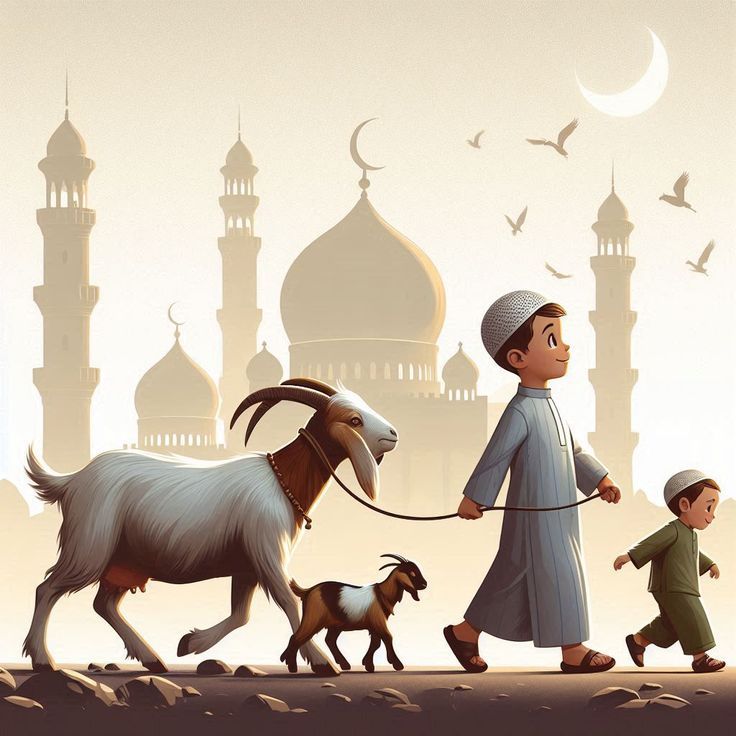Eid-ul-Fitr: Overview
Eid-ul-Fitr, often called the “Festival of Breaking the Fast,” is one of the most significant Islamic festivals celebrated by Muslims worldwide. It marks the end of Ramadan, the holy month of fasting, prayer, reflection, and self-discipline.
- Eid-ul-Fitr: Overview
- History of Eid-ul-Fitr
- Significance of Eid-ul-Fitr
- Rituals and Celebrations
- 1. Eid Prayer (Salat al-Eid)
- 2. Charity (Zakat al-Fitr)
- 3. Festive Meals
- 4. Family and Community Gatherings
- 5. Cultural Practices
- Eid-ul-Fitr Around the World
- Impact on Daily Life and Society
- FAQs about Eid-ul-Fitr
Eid-ul-Fitr is celebrated on the first day of Shawwal, the 10th month of the Islamic lunar calendar. Since the Islamic calendar is lunar, the date varies each year based on the sighting of the new moon.
History of Eid-ul-Fitr
The festival has its roots in Islamic tradition:
Fasting in Ramadan:
Ramadan is observed to commemorate the first revelation of the Quran to Prophet Muhammad (PBUH).
Fasting from dawn to sunset teaches Muslims self-restraint, empathy for the needy, and spiritual reflection.
Inauguration of Eid:
Prophet Muhammad (PBUH) established Eid-ul-Fitr as a day of gratitude to Allah, following the month-long fasting.
It is a day of celebration, charity, and communal prayers, emphasizing unity and generosity.
Significance of Eid-ul-Fitr
Religious Significance:
Marks the end of Ramadan, a period of spiritual purification.
Encourages devotion, prayer, and submission to Allah’s will.
Social Significance:
Strengthens community bonds, as Muslims gather for prayers and festive celebrations.
Promotes generosity, empathy, and charity.
Moral Significance:
Encourages the practice of Zakat al-Fitr, a form of charity given to the needy, ensuring everyone can celebrate Eid.
Reinforces values of kindness, humility, and gratitude.
Rituals and Celebrations
Eid-ul-Fitr is celebrated with a combination of religious observances and cultural customs:
1. Eid Prayer (Salat al-Eid)
The day begins with a special congregational prayer at mosques or open grounds.
It includes a sermon (khutbah) emphasizing thankfulness, mercy, and moral conduct.
2. Charity (Zakat al-Fitr)
Muslims are required to give charity before the Eid prayer, ensuring that the poor and needy can also participate in the celebrations.
3. Festive Meals
After a month of fasting, families prepare special dishes, sweets, and desserts.
Popular foods vary regionally, like Sheer Khurma in India and Pakistan, a sweet vermicelli dish prepared with milk, dates, and nuts.
4. Family and Community Gatherings
Eid is a time for visiting relatives, exchanging gifts, and strengthening social ties.
People dress in new or traditional attire, decorate homes, and celebrate with loved ones.
5. Cultural Practices
In many regions, children receive Eidi (money or gifts) from elders.
Communities organize fairs, cultural events, and charitable activities to spread joy and unity.
Eid-ul-Fitr Around the World
India & Pakistan: Celebrated with prayers, community feasts, and sweet delicacies like Seviyan and Sheer Khurma.
Middle East: Large congregational prayers, family gatherings, and Zakat al-Fitr.
Southeast Asia: Known as Hari Raya Aidilfitri, marked by family visits, festive foods, and cultural events.
Western Countries: Muslims celebrate with prayers, charity, and community events, sometimes combining cultural and religious traditions.
Impact on Daily Life and Society
Spiritual Renewal: Reinforces faith, devotion, and self-discipline after Ramadan.
Family and Community Bonding: Encourages social harmony, family gatherings, and unity.
Charity and Empathy: Strengthens the culture of helping the needy and fostering social responsibility.
Cultural Celebration: Preserves Islamic traditions, cuisine, and customs, promoting cultural awareness.
Economic Activity: Boosts markets with festive shopping, gifts, clothes, and food items.
FAQs about Eid-ul-Fitr
When is Eid-ul-Fitr celebrated?
On the first day of Shawwal, following the month of Ramadan, determined by moon sighting.
What is the significance of Zakat al-Fitr?
A form of charity given to ensure everyone, including the poor, can celebrate Eid.
Why is Eid-ul-Fitr called the Festival of Breaking the Fast?
Because it marks the end of Ramadan, a month-long fasting period.
Is Eid-ul-Fitr a public holiday in India?
Yes, it is a national holiday in India and observed widely across states with Muslim populations.
What foods are traditionally eaten during Eid?
Regional delicacies include Seviyan, biryani, kebabs, sweets, and desserts, shared with family and friends.
Conclusion
Eid-ul-Fitr is a festival of gratitude, joy, and compassion. Beyond the religious significance, it encourages social unity, charity, and family bonding. Through prayers, feasting, and acts of kindness, Eid-ul-Fitr brings communities together, spreading peace, happiness, and goodwill across society.








